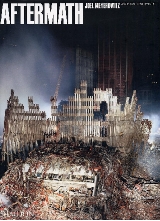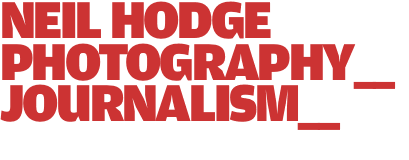Site created by Amplitude. |
||
Aftermath review
Aftermath, Joel Meyerowitz – Phaidon, £45
For many, the events of 9/11 are encapsulated by the images of the day and the falling towers. But Aftermath presents a different take. Published to coincide with the fifth anniversary of the World Trade Centre attacks, Aftermath serves as a poignant elegy to the thousands that lost their lives and the determination of the hundreds of workers who assisted in the clean up process.
When photographer Joel Meyerowitz first began creating the archive, his initial aim had been to set up a collective of photographers that would record the recovery and renewal of the area. Inspired by the work of Dorothea Lange and Walker Evans which had so powerfully recorded the effect of the Great Depression of the 1920s and 30s, he was convinced that a similar job needed to be done here. While Lange and Evans had the support and patronage of the Farm Security Administration, the parties that were controlling the recovery of Ground Zero were not so unified and Meyerowitz embarked on the project alone.
However, he had to battle to get access to the site. In the week after the buildings fell, Meyerowitz had tried to take photographs of the site and had been stopped by a police officer who had explained that the area was a crime scene and no photographs were allowed. This proved to be a remarkable turning point for the photographer: “To me” he said, “no photographs meant “no history”, and in that moment, I decided that I had to find my way into the zone where I would make a photographic archive for the people of New York – one that would describe in all its awesome detail, the impact of the devastation on lower Manhattan.” It was only through the support of many of the actual workers that he managed to stay and complete his remarkable project. They understood that history was in the making and realised its importance for future generations.
At the end of the year, Meyerowitz had compiled 3000 images. They were all donated to the Museum of the City of New York. The World Trade Centre Archive is now part of the museum’s permanent collection. For the past few years, a small selection of these photographs was featured in a travelling exhibition to more than 200 cities in 60 countries reaching over 3.5 million people.
Meyerowitz’s superb colour photographs document the wreckage in vivid detail, followed by the demolition, excavation and removal of two million tonnes of debris that would transform the site from one of total devastation to clear ground seventy feet below street level. Throughout the 372-page volume, Meyerowitz tries to provide a sense of the conflicting scale of the wreckage: the human scale, city scale and, not least, nature’s scale in its fractured and fitful relationship to architecture.
Meyerowitz’s photographs also try to capture the pathos of those involved in the clean up operation, such as his portraits of the fireman who searched all year for his brother’s remains, raking the site by hand, finding the personal effects of so many others that he became known as “The Raven”.
“Meyerowitz tries to provide a sense of the conflicting scale of the wreckage: the human scale, city scale and, not least, nature’s scale in its fractured and fitful relationship to architecture”

